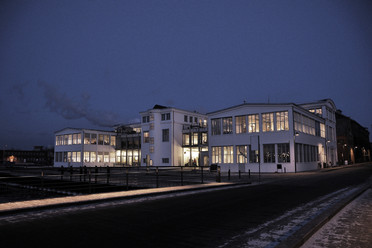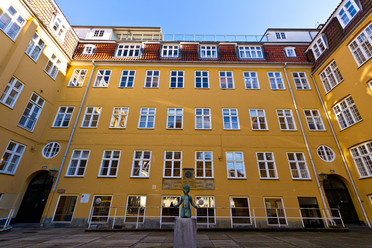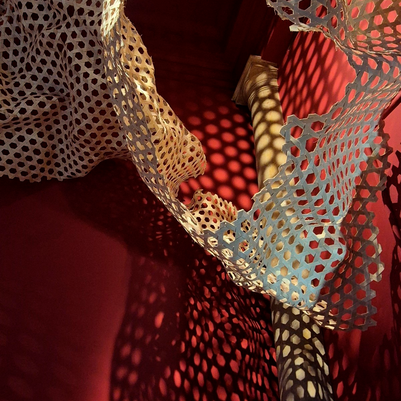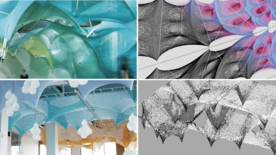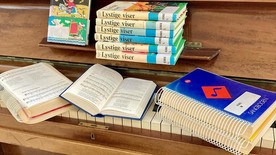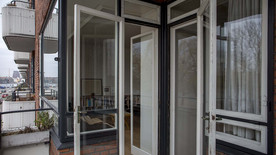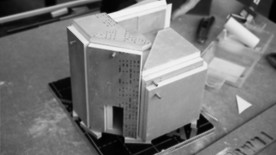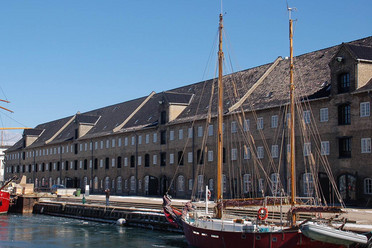
Drawing Millions of Plans
Conference 1 – 3 November
Exhibition 1 – 21 November
The conference and exhibition invites scholars and practitioners to investigate and discuss contemporary architectural drawing and, in particular, the drawn plan.
We will consider various types of drawing ranging from the sketch to the working drawing as an epistemic and/or generative device, and look at the role of drawing in relation to 3D techniques and drawing in the spectrum between representation and simulation. What types of contemporary plan drawing practices do we know exist today – or should be developed – in relation to architectural education, as well as to design work and actual building practices situated in professional offices?
Keynote speakers:
Penelope Haralambidou, The Bartlett School of Architecture
Martino Tattara, Dogma / KU Leuven
Programme
Wednesday 1 November
16.00-17.00: Registration
17.00-17.15: Welcome
17.15-18.45: Keynote lecture by Martino Tattara
18.45-20.00: Exhibition vernissage
Thursday 2 November
9.00-17.00: Conference incl. paper sessions
Friday 3 November
9.00-14.00: Conference incl. paper sessions
14.00-15.30: Keynote lecture by Penelope Haralambidou
15.30-17.30: Conference incl. paper sessions
The programme may be subject to changes.
The exhibition and keynotes lectures are public, free of charge and do not require registration.
Keynote Speakers
Keynote Speakers
Dr Penelope Haralambidou is a Senior Lecturer at the Bartlett School of Architecture, UCL. Her research lies between architectural design and theory – with a focus on drawing and the relationship between architecture and film – and has been published and exhibited internationally. She is the author of Marcel Duchamp and the Architecture of Desire (Routledge, 2013) and has contributed writing on themes such allegory, figural theory, stereoscopy and film in architecture to a wide range of publications.
Martino Tattara is a practicing architect and co-founder of the office Dogma. He is Assistant professor of Architecture at the Faculty of Architecture, KU Leuven (Belgium). Between 2012 and 2015 he was the Head of Research and Teaching at ETH/Swiss Federal Institute of Technology, Studio Basel: Contemporary City Institute (Switzerland). Previously, he has taught for several years at the Berlage Institute in Rotterdam (the Netherlands). His theoretical work focuses on the relationship between architecture and large-scale urban design and he has widely published and lectured on topics related to the project of the city. Since a few years, he investigates through projects and writings the condition of domestic space.
Registration
Registration
Fee for attending the conference: €100 + payment fee
Payment and registration: https://billetto.dk/en/e/drawing-millions-of-plans-tickets-204435?ref=billetto-search
Deadline for registration: 12 October 2017.
The exhibition and keynotes lectures are public, free of charge and do not require registration.
Concept
Concept
This conference invites scholars and practitioners to investigate and discuss contemporary architectural drawing and, in particular, the drawn plan. We will consider various types of drawing ranging from the sketch to the working drawing as an epistemic and/or generative device, and look at the role of drawing in relation to 3D techniques and drawing in the spectrum between representation and simulation. What types of contemporary plan drawing practices do we know exist today – or should be developed – in relation to architectural education, as well as to design work and actual building practices situated in professional offices?
“A plan calls for the most active imagination,” wrote Le Corbusier in Towards A New Architecture. To Le Corbusier, the plan was essential to any architectural project and its agency comparable to that of a generator. Indeed, historically speaking, plans, whether they are floor plans, site plans or others, have been of unquestionable importance to the discipline of architecture. Yet, what is the agency of the plan today? May we still consider it a generator, a promotor of our imagination, or with the advent of digital design possibilities, has it merely lost its previous status as a privileged tool for developing and communicating about architecture?
Traditionally, the architectural plan was executed through the process of analogue hand drawing supported by geometrical tools. What are the implications for drawn plans and the processes of design and conceptualisation connected to plan drawing given that many professional architects today consider computers their privileged (drawing) tools? Do architects still use tracing paper (or napkins!) for sketching, and has the role of the sketched plan become purely diagrammatic, or turned into prototyping?
In a digital context, how have architectural offices changed their practice of drawing plans? What new kinds of drawing have been developed, and do they still possess the same aspects of ambiguity often associated with the hand-drawn sketch? Moreover, architects look at buildings orthogonally through plans. This projective way of looking is closely linked to traditional geometrical drawing tools. Yet, when tools change and projections persist, as with a lot of design software today, what are the consequences?
Drawn architectural plans may be considered as aesthetic objects worth contemplating and even exhibiting. They may be described as beautiful, which would imply that the plan possesses certain graphic and/or organisational qualities. This points to the plan as an object of meaning and imagination, and apt for interpretation, as stated by Le Corbusier. Such immaterial, almost existential aspects of the plan were emphasised by John Hejduk, who argued, “the plan shows the death of the soul of architecture. It is an X-ray of the soul.” Just as actual X-rays require skilled interpretation, what sort of hermeneutic measures does the drawn plan call for?
Programme and Abstracts
Programme and Abstracts
Committee
Committee
The conference will be hosted by the School of Architecture at the Royal Danish Academy of Fine Arts in Copenhagen, Denmark.
The initiative for the conference comes from the school’s research environment and has a focus on artistic as well as academic research. The organising committee are drawing researchers working with both academic and practice-based methods.
Jacob S. Bang, Associate Professor
Practical information for exhibitors
Practical information for exhibitors
It is the responsibility of the exhibitors to organise and pay for shipping to and from their own country, as well as transport to and from the exhibition venue in Copenhagen. It is also the responsibility of the exhibitors to take out and pay for insurance for this shipping and transportation. Drawing Millions of Plans can accept no responsibility for damage occurred to works during shipping, transport or exhibition.

Contact


